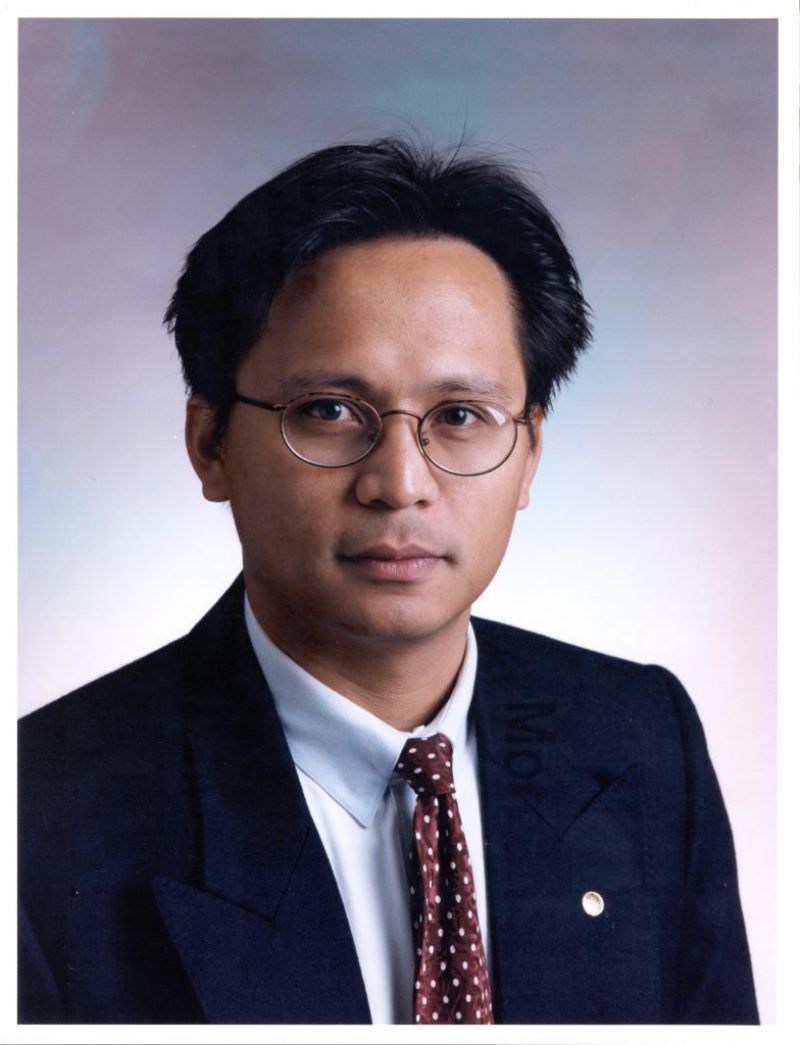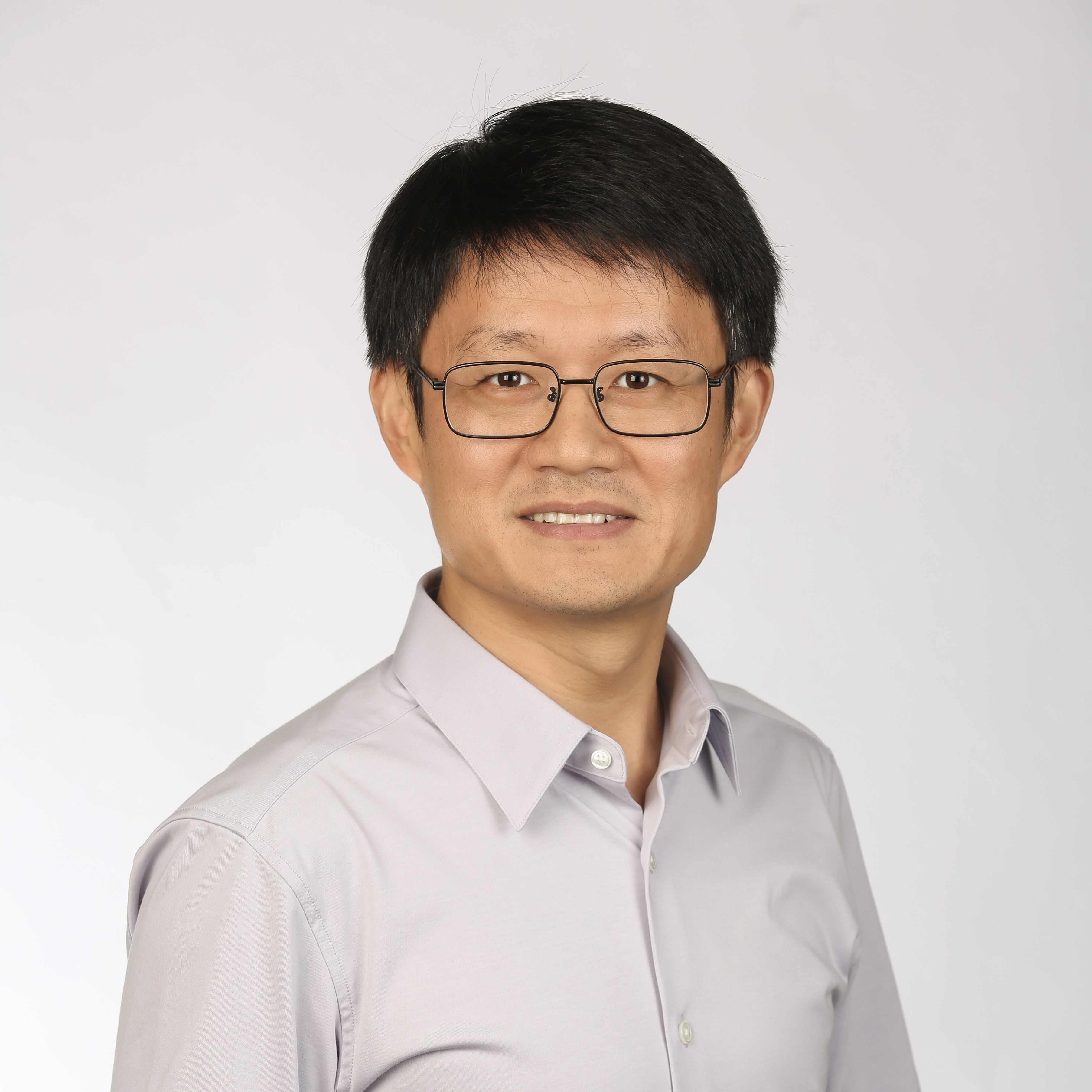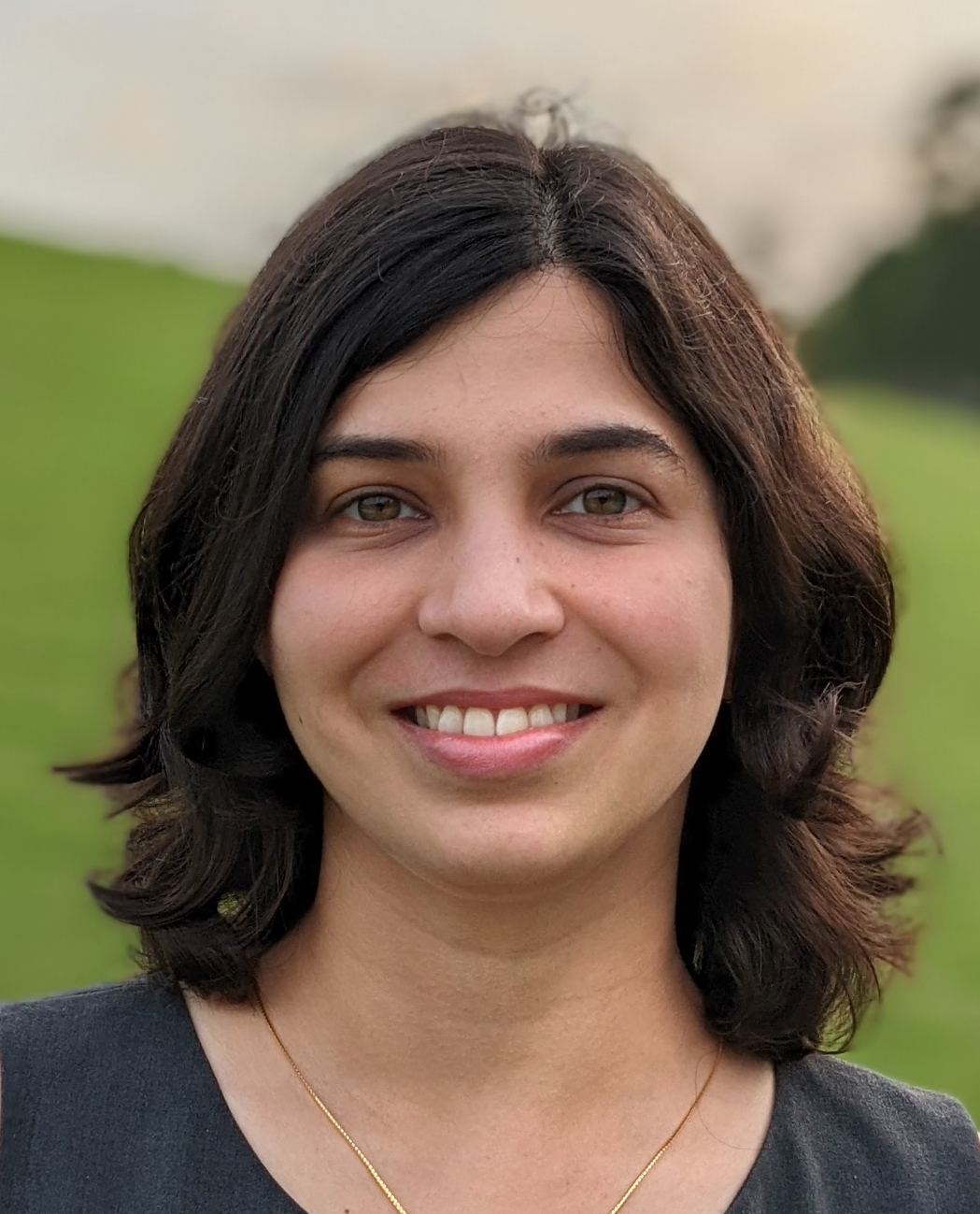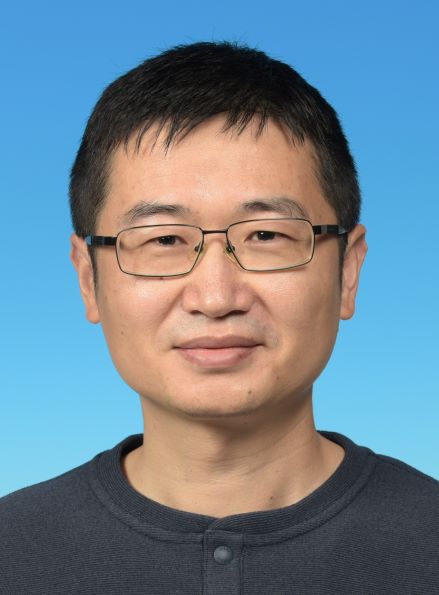AI4NextG @ NeurIPS'25
Workshop on AI and ML for Next-Generation Wireless Communications and Networking
San Diego Convention Center, USA - Saturday, December 6th, 2025

San Diego Convention Center, USA - Saturday, December 6th, 2025

The field of wireless communications and networking is undergoing a paradigm shift, driven by the growing potential of Artificial Intelligence (AI) and Machine Learning (ML) to redefine traditional system design principles. This workshop aims to catalyze interest and foster collaboration between the AI/ML and wireless communications communities. The timing of this workshop is especially significant, as the next-generation (NextG) wireless standardization efforts (such as 6G and WiFi 9) are just getting started, with AI-native technologies expected to play a central role across all aspects of the wireless ecosystem – from radio access to network management and edge intelligence. NextG represents a foundational shift in global infrastructure, enabling ultra-fast, low-latency, and intelligent connectivity that will power future applications in AI, robotics, immersive environments, and autonomous systems. These technologies offer unprecedented opportunities to both drive and benefit many applications, from healthcare and transportation to industrial automation and environmental monitoring. The economic and societal implications are vast: NextG networks will underlie trillions in global GDP impact, bridge digital divides, and shape how billions of people interact with technology and each other in the decades to come.
Despite the clear promise, a significant disconnect exists between the AI/ML and wireless research communities. AI/ML experts often lack an understanding of the unique physical, algorithmic, and architectural constraints inherent in wireless systems, while wireless researchers tend to adopt generic, off-the-shelf AI/ML models that are not optimized for the intricacies of wireless environments. Wireless environments are inherently dynamic, high-dimensional, and partially observable. These unique characteristics make them ideal testbeds for developing robust learning algorithms, particularly in areas like online learning, reinforcement learning, and in-context learning. At the same time, AI/ML techniques are becoming essential for managing the growing complexity of modern wireless networks, including resource allocation, interference mitigation, and cross-layer optimization. Bridging the gap between the two communities is not only necessary for meaningful technological advances but also critical for realizing the full societal impact of intelligent wireless systems.
This workshop aims to bring together researchers and practitioners at the intersection of artificial intelligence (AI), machine learning (ML), and wireless to address the unique challenges andopportunities posed by Next-Generation (NextG) wireless systems. As the 6G era begins to take shape, AI-native designs have emerged as a cornerstone of wireless innovation, with the potential to transform the performance, efficiency, and adaptability of communication systems. The integration of AI/ML is poised to influence every layer of the network stack, from physical-layer signal processing to network control and resource management.
The workshop will cover a broad range of topics that highlight both foundational research and practical applications of AI/ML in wireless systems. Key themes include, but are not limited to:
We welcome contributions that push the boundaries at this unique intersection and aim to create an engaging forum for students, scholars, and practitioners worldwide to share insights, discuss progress, and chart future directions in this exciting field. We invite technical papers with up to 6 pages each, vision/position papers with up to 4 pages each, and demo papers with up to 2 pages each (excluding references and appendices), reviewed by our workshop program committee. All submissions must use the official NeurIPS 2025 LaTeX style file for both submission and camera-ready versions. All double-anonymous submissions must use the NeurIPS author kit available here. The review process will be facilitated via OpenReview. Please make sure every author has an OpenReview account ahead of submission. The submission portal can be found here.
Accepted papers will be accessible via this website ahead of the workshop. Our workshop is non-archival and there are no formal proceedings. We allow submissions of manuscripts that have not been accepted by an archival conference, i.e., if your paper is in submission with an archival conference/journal at the time of the workshop submission deadline you are welcome to submit to AI4NextG.
[Please be aware] OpenReview's moderation policy for newly created profiles in the Call for Papers: New profiles created without an institutional email will go through a moderation process that can take up to two weeks. New profiles created with an institutional email will be activated automatically.
Authors of accepted papers should submit their final de-anonymized PDF via OpenReview using the workshop-specific LaTeX template adapted from the NeurIPS style (the checklist is not required). Final versions may be up to 7 pages for technical papers, 5 pages for vision/position papers, and 3 pages for demo papers (excluding references and appendices). Links to code/data and ethics or impact notes are encouraged. The workshop is non-archival, and subsequent submission elsewhere is permitted.
We are looking forward to hosting an exciting set of invited speakers from diverse research backgrounds!

Topic area: Machine Learning, artificial intelligence and medicine.

Topic area: Computer and communication networks.

Topic area: Ultra-wideband systems, network localization and navigation, network interference exploitation, and quantum information science.
Topic area: Machine learning, wireless communications and networking, and information theory.

Topic area: NextG wireless, theoretical machine learning and stochastic network optimization theory.

Topic area: AI + Wireless testbed.



A Best Paper and a Runner-up will be announced during the workshop. Stay tuned!
The workshop will be held on Saturday, December 6, 2025, 8:00 a.m. – 5:00 p.m.. We will be in Upper Level Room 10, San Diego Convention Center, San Diego, CA, USA. All times in the schedule are in PST (San Diego local time).
| Time | Session | Speaker |
|---|---|---|
| 8:00am to 8:15am | Opening Remarks: Goals and logistics | |
| 8:15am to 8:45am | Keynote1: The Agent Network: Unleashing Self-Organising AI for a New Economic Era | Mihaela van der Schaar |
| 8:45am to 9:15am | Keynote 2: Shaping the Future of Wireless in the AI Era | Yang Li |
| 9:15am to 10:00am | Morning Coffee Break + Poster A | Papers #1-3 & #7-35 |
| 10:00am to 10:30am | Keynote 3: Building a STAIRWAI to COSMOS: An AI-enabled testbed for Wireless+AI | Anand Sarwate |
| 10:30am to 11:00am | Keynote 4: Towards the AI-native Air Interface: Research Challenges in the Protocol Stack | Alvaro Valcarce Rial |
| 11:00am to 11:30am | Oral A | Papers #1-3 |
| 11:30am to 12:00pm | Keynote 5: Decentralized Multi-agent Reinforcement Learning for Wireless Random Access Network Optimization | Jia Liu |
| 12:00pm to 12:30pm | Keynote 6: Enabling Distributed Intelligent Services at the Network Edge | Leandros Tassiulas |
| 12:30pm to 1:30pm | Lunch | |
| 1:30pm to 2:00pm | Keynote 7: TBD | Moe Win |
| 2:00pm to 2:30pm | Keynote 8: AI-Native Networking: The Future of Autonomous IT | Bob Friday |
| 2:30pm to 3:00pm | Keynote 9: Augmented In-Context Learning for Wireless Symbol Detection: From Theory to Practice | Jing Yang |
| 3:00pm to 3:45pm | Afternoon Coffee Break + Poster B | Papers #4-6 & #36-61 |
| 3:45pm to 4:15pm | Oral B | Papers #4-6 |
| 4:15pm to 4:45pm | Keynote 10: TBD | Julien Forgeat |
| 4:45pm to 5:15pm | Keynote 11: TBD | Taesang Yoo |
| 5:15pm to 5:30pm | Closing Remarks: Awards announcement, next steps, resources |
| # | Title | Authors | Decision |
|---|---|---|---|
| 1 | Robust Channel Representation for Wireless: A Multi-Task Masked Contrastive Approach | Berkay Guler, Hamid Jafarkhani, Giovanni Geraci | Oral |
| 2 | Optimal Neural Compressors for the Rate-Distortion-Perception Tradeoff | Eric Lei, Hamed Hassani, Shirin Saeedi Bidokhti | Oral |
| 3 | PEARL: Peer-Enhanced Adaptive Radio via On-Device LLM | Juhyung Lee, Yanqing Lu, Klaus Doppler | Oral |
| 4 | Preference-centric Bandits in Wireless Communications: Theory and Applications | Meltem Tatlı, Ali Tajer | Oral |
| 5 | Constrained Multi-Agent Reinforcement Learning for Task Offloading in Wireless Edge Networks | Andrea Fox, Francesco De Pellegrini, Eitan Altman | Oral |
| 6 | Beyond Prompts: Preserving Semantics in Diffusion-based Communication | Wonjung Kim, Nakyung Lee, Sangwoo Hong, Jungwoo Lee | Oral |
| 7 | Cross-Layer Design for Near-Field mmWave Beam Management and Scheduling under Delay-Sensitive Traffic | Zijun Wang, Anjali Omer, Nicholas Mastronarde, Jacob Chakareski, Rui Zhang | Poster |
| 8 | Building the Cognitive Network: Pillars of AI-Native Wireless ecosystem | Supratik Bhattacharjee, Sharad Sambhwani | Poster |
| 9 | End-to-End Waveform Design for Nonlinear Satellite Links with a Convolutional Autoencoder | Yara Huleihel, Rom Hirsch, Haim H. Permuter | Poster |
| 10 | A Study of Neural Polar Decoders for Communication | Rom Hirsch, Ziv Aharoni, Haim H. Permuter, Henry Pfister | Poster |
| 11 | XAI-on-RAN: Explainable, AI-native, and GPU-Accelerated RAN Towards 6G | Osman Tugay Basaran, Falko Dressler | Poster |
| 12 | Masked Symbol Modeling for Demodulation of Oversampled Baseband Communication Signals in Impulsive Noise-Dominated Channels | Oguz Bedir, Nurullah Sevim, Mostafa Ibrahim, Sabit Ekin | Poster |
| 13 | Physics-Informed Neural Networks for Wireless Channel Estimation with Limited Pilot Signals | Seyed Alireza Javid, Nuria Gonzalez Prelcic | Poster |
| 14 | Satisficing with Binary Feedback: Multi-User mmWave Beam and Rate Adaptation via Combinatorial Bandits | Emre Özyıldırım, Barış Yaycı, Umut Eren Akturk, Cem Tekin | Poster |
| 15 | Managing Conflicts Among Black-Box RAN Apps via Multi-Fidelity Game-Theoretic Optimization | Yunchuan Zhang, Osvaldo Simeone | Poster |
| 16 | WISE: Wireless Analog Computing at Radio Frequency for Disaggregated Deep Learning Inference | Zhihui Gao, Sri Krishna Vadlaman, Kfir Sulimany, Dirk Englund, Tingjun Chen | Poster |
| 17 | Federated Model-Based Offline Multi-Agent Reinforcement Learning for Wireless Networks | Dohyeok Kwon, Yeonseo Jeong, Sungweon Hong, Songnam Hong | Poster |
| 18 | Retrieval-Augmented Generation for Reliable Interpretation of Radio Regulations | Zakaria El Kassimi, Fares Fourati, Mohamed-Slim Alouini | Poster |
| 19 | Dynamic Features Adaptation in Networking: Toward Flexible training and Explainable inference | Yannis Belkhiter, Seshu Tirupathi, Giulio Zizzo, Merim Dzaferagic, John D. Kelleher | Poster |
| 20 | Network Traffic Foundation Model with Adaptation via In-Context Learning and Mixture-of-Experts | Miru Kim, Minhae Kwon | Poster |
| 21 | Asynchronous Unsupervised Online Learning of Bayesian Deep Receivers | Nicole Uzlaner, Nir Shlezinger | Poster |
| 22 | Conformal Sparsification for Bandwidth-Efficient Edge–Cloud Speculative Decoding | Payel Bhattacharjee, Fengwei Tian, Meiyu Zhong, Guangyi Zhang, Osvaldo Simeone, Ravi Tandon | Poster |
| 23 | Single-Step Online Adaptation of Modular Bayesian Deep Receivers with Streaming Data | Yakov Gusakov, Osvaldo Simeone, Tirza Routtenberg, Nir Shlezinger | Poster |
| 24 | Towards Building a Foundation Model for Wireless Sensing: A Pilot Study with FMCW Radar Sensor | Omer Gokalp Serbetci, Aditya V. Padaki, Prasad K Shamain, Koushik Araseethota Manjunatha | Poster |
| 25 | Long-term Wireless Link Scheduling with State-Augmented Graph Neural Networks | Romina Garcia Camargo, Zhiyang Wang, Navid NaderiAlizadeh, Alejandro Ribeiro | Poster |
| 26 | Physics-based Meta Learning for Channel Transformation | Satyavrat Wagle, Akshay Malhotra, Shahab Hamidi-Rad, Aditya Sant, Christopher Brinton | Poster |
| 27 | Federated learning over physical channels: adaptive algorithms with near-optimal guarantees | Rui Zhang, Wenlong Mou | Poster |
| 28 | ConTwin: Contrastive Learning for Robust Digital Twin CSI Prediction | Sagnik Bhattacharya, Abhiram Rao Gorle, John M. Cioffi | Poster |
| 29 | Position: There Is No Ground Truth -- Rethinking Evaluation in AI-Driven Channel Prediction | Abhiram Rao Gorle, John M. Cioffi | Poster |
| 30 | Through the telecom lens: Are all training samples important? | Shruti Bothe, Illyyne Saffar, Aurelie Boisbunon, Hasan Farooq, Julien Forgeat, Md Moin Uddin Chowdhury | Poster |
| 31 | Constrained Network Slice Assignment via Large Language Models | Sagar Sudhakara, Pankaj Rajak | Poster |
| 32 | Mixture-of-Experts for Multi-Task Semantic Communications with CSI-Free Multiple Access | Sujin Kook, Jihong Park, Seong-Lyun Kim, Seung-Woo Ko | Poster |
| 33 | Neuro-Cognitive Radios for Dynamic Spectrum Access | Rodrigo P. Ferreira, Pedro Lustosa Rege Botelho, Yubo Zhang, Igor Kadota | Poster |
| 34 | LLM Agent Communication Protocol (LACP) Requires Urgent Standardization: A Telecom-Inspired Protocol is Necessary | Xin Li, Mengbing Liu, Chau Yuen | Poster |
| 35 | VLF-MSC: Vision-Language Feature-Based Multimodal Semantic Communication System | Gwang-Yeon Ahn, Jiwan Seo, Joonhyuk Kang | Poster |
| 36 | The Pathway to Adaptive Lightweight AI Transceivers (Vision Paper) | Nimrod Glazer, Nir Shlezinger, Tirza Routtenberg | Poster |
| 37 | MAR-FL: A Communication Efficient Peer-to-Peer Federated Learning System | Felix Mulitze, Herbert Woisetschläger, Hans Arno Jacobsen | Poster |
| 38 | Frequency Extrapolation for Carrier Aggregation as a Super-Resolution Problem: Rethinking Conventional Forecasting Methods | Daoud Burghal, Yan Xin, Jianzhong Charlie Zhang | Poster |
| 39 | Block ModShift: Model Privacy via Dynamic Designed Shifts | Nomaan A. Kherani, Urbashi Mitra | Poster |
| 40 | In-Context Radio Map Estimation via Ripple Autoregressive Modeling | Yuanzhe Peng, Jie Xu | Poster |
| 41 | Multi-Task Transformer Receiver for OFDM Channel Estimation and Symbol Detection | Zhoubin Kou, Renpu Liu, Jing Yang, Cong Shen | Poster |
| 42 | Few Features are Enough: Communication-Efficient AI-RAN | Dayoung Choi, Siyoun Park, Jungmin Kwon, Hyunggon Park | Poster |
| 43 | Towards Achieving Integer and Load-balancing User Association in Wireless Networks with a Reparameterized Attention-based GNN | Qing Lyu, Mai Vu | Poster |
| 44 | Reasoning Meets Representation: Envisioning Neuro-Symbolic Wireless Foundation Models | Jaron Fontaine, Mohammad Cheraghinia, John Strassner, Adnan Shahid, Eli De Poorter | Poster |
| 45 | CHAST: Attention Aided SISO OFDM Channel Estimation | Mehmetcan Gok, John Zhou, Supratik Bhattacharjee, Sharad Sambhwani, Huaning Niu | Poster |
| 46 | Privacy via Scheduling and Connectivity Design in Decentralized Federated Learning | Feng Wang, Zixi Wang, M. Cenk Gursoy, Senem Velipasalar | Poster |
| 47 | Channel Simulation and Distributed Compression with Ensemble Rejection Sampling | Buu Phan, Ashish J Khisti | Poster |
| 48 | AURA: Adaptive Unified Reasoning and Automation with LLM-Guided MARL for NextG Cellular Networks | Narjes Nourzad, Mingyu Zong, Bhaskar Krishnamachari | Poster |
| 49 | Tele-LLM-Hub: Building Context-Aware Multi-Agent LLM Systems for Telecom Networks | Vijay K Shah, Cong Shen | Poster |
| 50 | A Compression Algorithm for Distributed LMMs with Different Information Fusion Techniques | Eren Balevi | Poster |
| 51 | The LLM as a Network Operator: A Vision for Generative AI in the 6G Radio Access Network | Giwa Oluwaseyi, Michael Adewole, Tobi Awodumila, Pelumi Aderinto | Poster |
| 52 | Foundation Model-aided Multi-agent Reinforcement Learning for Random Access Network Optimization | Myeung Suk Oh, Alvaro Velasquez, Jia Liu | Poster |
| 53 | Realism and Fidelity: Two Sides of a Coin in Deep Joint Source-Channel Coding | Haotian Wu, Weichen Wang, Di You, Pier Luigi Dragotti, Deniz Gunduz | Poster |
| 54 | SafeCOMM: Investigating Safety Degradation in Fine-Tuned Telecom Large Language Models | Aladin Djuhera, Swanand Ravindra Kadhe, Farhan Ahmed, Syed Zawad, Fernando Luiz Koch, Walid Saad, Holger Boche | Poster |
| 55 | Conditional Denoising Diffusion Autoencoders for Wireless Semantic Communications | Mehdi Letafati, Samad Ali, Matti Latva-aho | Poster |
| 56 | Data-Free Quantization of Neural Receivers: When 4-Bit Succeeds, Why 6-Bit Matters for 6G | SaiKrishna S. Yellapragada, Esa Ollila, Mário Costa | Poster |
| 57 | A Probabilistic Approach to Pose Synchronization for Multi-Reference Alignment with applications to MIMO wireless communication systems | Rob Romijnders, Gabriele Cesa, Christos Louizos, Kumar Pratik, Arash Behboodi | Poster |
| 58 | From Simulation to Practice: Generalizable Deep Reinforcement Learning for Cellular Schedulers | Petteri Kela, Bryan Liu, Alvaro Valcarce Rial | Poster |
| 59 | Adaptive GNN-based Proportional-Fair Scheduling in MIMO Networks for Non-stationary Channels | Yirong Cheng, Divyanshu Pandey, Ashutosh Sabharwal | Poster |
| 60 | Fairness-Oracular MARL with Competitor-Aware Signals for Collaborative Inference | Hansong Zhou, Xiaonan Zhang | Poster |
| 61 | Adaptive Cooperative Transmission Design for Ultra-Reliable Low-Latency Communications via Deep Reinforcement Learning | Hyemin Yu, Hong-Chuan Yang | Poster |




